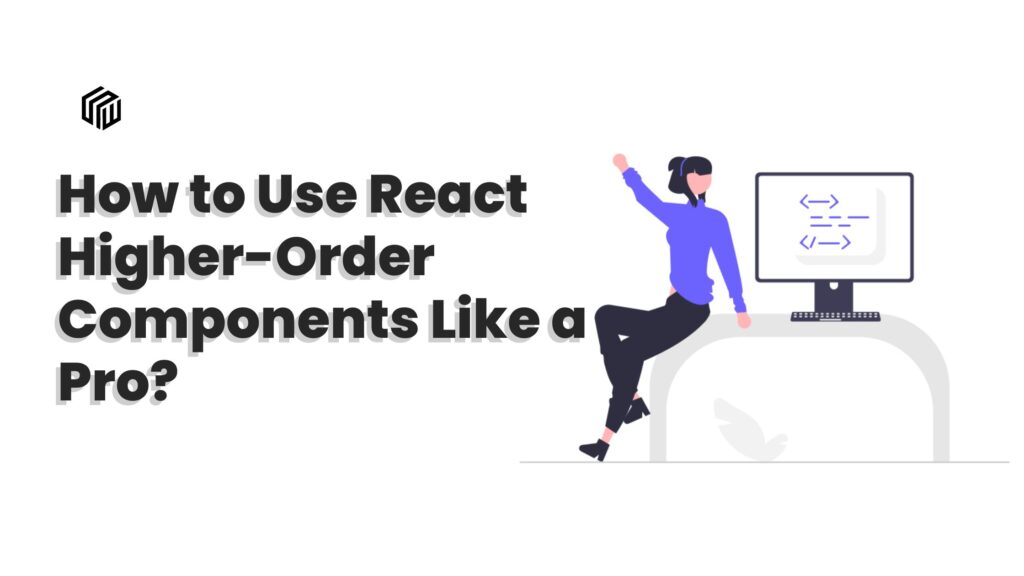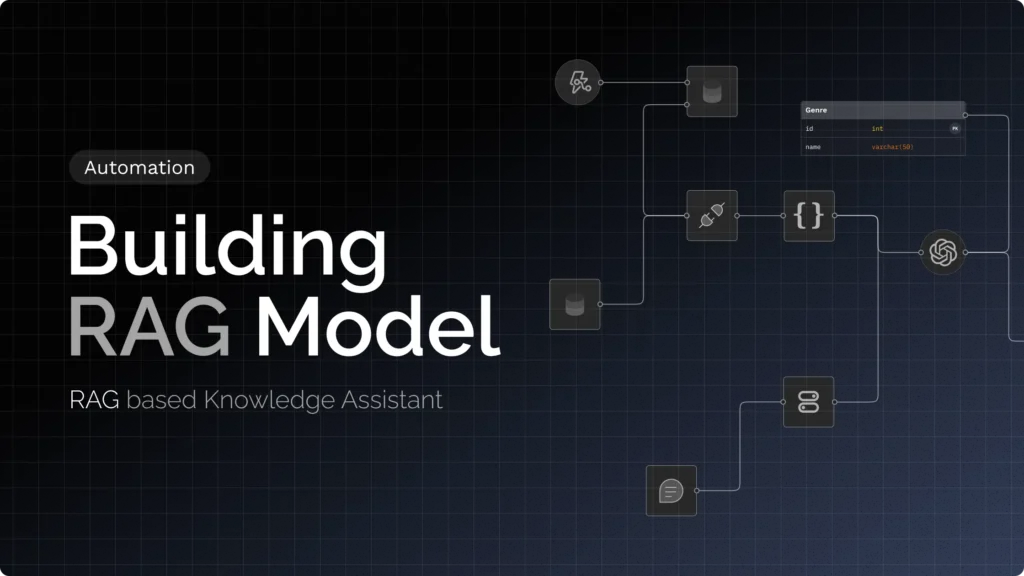React higher-order components are a powerful tool that can greatly improve the efficiency and organization of your code. These special functions take a component as an argument and return a new, enhanced component that is typically enhanced with additional functionality or behaviour.
In this guide, we will delve into the details of higher-order components and explore how they work in React. We will cover how to create and use HOCs, and we will provide examples of when and how to utilize them in your projects. We will also discuss advanced techniques for working with HOCs, such as optimizing performance and debugging.
By the end of this guide, you will have a thorough understanding of HOCs and how to use them effectively in your React projects. Whether you are a beginner or an experienced React developer, this guide will provide valuable insights and best practices for working with HOCs.
What are Higher-Order Components?
Higher-order components are functions that take a component as an argument and return a new component.
These special functions allow you to encapsulate common behaviour and functionality in a single, reusable component, which can greatly improve the efficiency and organization of your code.
To give you a better understanding of how higher-order components work, let’s take a look at an example. Suppose we have a component called MyButton that renders a button element:
const MyButton = (props) => {
return <button {...props}>Click me!</button>;
}We can create a higher-order component called withLoadingIndicator that takes MyButton as an argument and returns a new component that is enhanced with a loading indicator:
const withLoadingIndicator = (WrappedComponent) => {
return (props) => {
return (
<div>
{props.isLoading && <div>Loading...</div>}
<WrappedComponent {...props} />
</div>
);
};
};The withLoadingIndicator component takes a component as an argument (in this case, MyButton) and returns a new component that is enhanced with a loading indicator. The returned component will render the original component (MyButton) and also display a “Loading…” message if the isLoading prop is true.
Here’s how we can use the withLoadingIndicator higher-order component:
const EnhancedButton = withLoadingIndicator(MyButton);
// Render the enhanced button component
<EnhancedButton isLoading={true} />In this example, the EnhancedButton component is a new, enhanced version of MyButton that is wrapped with the withLoadingIndicator HOC. When rendered, the EnhancedButton component will display the “Loading…” message before rendering the original MyButton component.
HOCs differ from regular components in that they are functions that take a component as an argument and return a new component, rather than simply returning a React element. This allows you to encapsulate common behaviour and functionality in a single, reusable component, which can greatly improve the efficiency and organization of your code.
How to Create a Higher-Order Component?
Creating higher-order components in React is a straightforward process that can be accomplished in a few simple steps. Here’s a step-by-step guide on how to create your own higher-order component:
- Define a function that takes a component as an argument: The first step in creating a higher-order component is to define a function that takes a component as an argument. This function will be the HOC itself, and it will be used to wrap the original component with additional functionality or behaviour.
- Return a new, enhanced component from the HOC function: Next, you’ll want to return a new, enhanced component from the HOC function. This new component should be based on the original component that was passed as an argument. But it should be enhanced with additional functionality or behaviour. You can do this by using the original component as a wrapper and adding the desired enhancements inside it.
- Use the HOC to wrap the original component: Once you have defined your higher-order component, you can use it to wrap the original component by calling the HOC function and passing the original component as an argument. This will return a new, enhanced component that is based on the original component but enhanced with the additional functionality or behaviour provided by the HOC.
Here’s an example of how you might create a higher-order component that adds a loading indicator to a component:
const withLoadingIndicator = (WrappedComponent) => {
return (props) => {
return (
<div>
{props.isLoading && <div>Loading...</div>}
<WrappedComponent {...props} />
</div>
);
};
};In this example, the withLoadingIndicator component takes a component as an argument (WrappedComponent) and returns a new component that is enhanced with a loading indicator. The returned component will render the original component (WrappedComponent) and also display a “Loading…” message if the isLoading prop is true.
To use the withLoadingIndicator higher-order component, you would simply call it and pass the original component as an argument:
const EnhancedButton = withLoadingIndicator(MyButton);
// Render the enhanced button component
<EnhancedButton isLoading={true} />There are a few best practices and tips to keep in mind when writing higher-order components:
- Make sure to provide a clear and descriptive name for your higher-order component. This will help make it easier for others to understand what your component does and how it can be used.
- Avoid using too many props in your higher-order component. It’s generally a good idea to limit the number of props you pass down to the wrapped component to avoid bloating the component’s prop list.
- Be mindful of the order in which you pass props to the wrapped component. If you pass props that might overwrite props passed directly to the wrapped component, make sure to spread the wrapped component’s props after your own.
Here are some common pitfalls to avoid when working with higher-order components:
- Don’t nest higher-order components too deeply: It’s generally a good idea to avoid nesting higher-order components too deeply. This can make it more difficult to understand the component hierarchy and can lead to performance issues.
- Be mindful of the order in which you pass props to the wrapped component: If you pass props that might overwrite props passed directly to the wrapped component, make sure to spread the wrapped component’s props after your own.
- Don’t mutate the wrapped component’s state: Be careful not to mutate the wrapped component’s state, as this can cause unexpected behaviour. Instead, use the
setStatemethod to update the state in a controlled manner. - Avoid introducing unnecessary re-renders: Higher-order components can sometimes cause unnecessary re-renders of the wrapped component if not implemented carefully. To avoid this, make sure to memoize the higher-order component or use the
React.memohigher-order component to wrap the wrapped component.
Use Cases for Higher-Order Components
One common use case for higher-order components is to encapsulate common behaviour and functionality that is used across multiple components. For example, you might have a higher-order component that adds a loading indicator to a component, as we saw in an earlier example:
const withLoadingIndicator = (WrappedComponent) => {
return (props) => {
return (
<div>
{props.isLoading && <div>Loading...</div>}
<WrappedComponent {...props} />
</div>
);
};
};
By using a higher-order component like withLoadingIndicator, you can easily add a loading indicator to any component in your application without having to duplicate the code. This can help improve code reuse and organization, as you only need to maintain the code for the higher-order component in a single location.
Another common use case for higher-order components is to abstract away complex logic or functionality that is used by multiple components. For example, you might have a higher-order component that handles data fetching and caching:
const withDataFetching = (WrappedComponent) => {
return (props) => {
const [data, setData] = useState(null);
const [isLoading, setIsLoading] = useState(false);
const [error, setError] = useState(null);
useEffect(() => {
setIsLoading(true);
fetchData()
.then((response) => {
setData(response.data);
setIsLoading(false);
})
.catch((err) => {
setError(err);
setIsLoading(false);
});
}, []);
if (isLoading) {
return <div>Loading...</div>;
}
if (error) {
return <div>Error: {error.message}</div>;
}
if (!data) {
return null;
}
return <WrappedComponent data={data} {...props} />;
};
};In this example, the withDataFetching component abstracts away the logic for fetching and caching data, and it provides the data to the wrapped component via the data prop. This can be particularly useful if you have multiple components that need to fetch and display data from the same source.
It can also be used to add additional behaviour or functionality to a component without modifying the original component code. For example, you might have a higher-order component that adds pagination functionality to a table component:
const withPagination = (WrappedComponent) => {
return (props) => {
const [page, setPage] = useState(1);
const [perPage, setPerPage] = useState(10);
const handlePageChange = (newPage) => {
setPage(newPage);
};
const handlePerPageChange = (newPerPage) => {
setPerPage(newPerPage);
};Advanced HOC Techniques:
Optimizing performance with higher-order components is important, as these components can sometimes introduce unnecessary re-renders if not implemented carefully. There are several techniques you can use to optimize performance with higher-order components:
- Memoize the higher-order component: One technique for optimizing performance is to memoize the higher-order component using a library like
recompose. Memoization can help prevent unnecessary re-renders of the HOC and the wrapped component, which can improve performance in cases where the higher-order component is called frequently. - Use the
React.memocomponent: Another technique for optimizing performance is to use theReact.memocomponent to wrap the wrapped component. This can help prevent unnecessary re-renders of the wrapped component when the props do not change.
Debugging higher-order components can sometimes be challenging, as it can be difficult to understand how the higher-order component is affecting the wrapped component. To debug HOCs, you can use the React Developer Tools browser extension to inspect the component hierarchy and debug the wrapped component and the HOC. You can also use the React DevTools browser extension to set breakpoints and step through code to understand how the HOC is affecting the wrapped component.
There are also several advanced techniques you can use when working with higher-order components:

- Chaining multiple higher-order components together: You can use the
composefunction from therecomposelibrary to chain multiple HOCs together. This can be useful for applying multiple HOCs to the same component in a concise and reusable way. - Creating higher-order components that accept options: You can create HOCs that accept options as an argument, which can be useful for providing flexibility and customization when applying the higher-order component to different components.
- Using the
createEagerFactoryfunction from therecomposelibrary: ThecreateEagerFactoryfunction from therecomposelibrary can be used to create a HOC that eagerly renders the wrapped component. This can be useful for optimizing performance in cases where the wrapped component is expensive to render. By eagerly rendering the wrapped component, the higher-order component can avoid unnecessary re-renders and improve the overall performance of your application. It is important to note, however, that using thecreateEagerFactoryfunction may not always be the best solution for optimizing performance with higher-order components. It can sometimes lead to unnecessary re-renders if not used carefully.
- Using the
createEagerElementfunction from therecomposelibrary: Similar to thecreateEagerFactoryfunction, thecreateEagerElementfunction from therecomposelibrary can be used to create a HOC that eagerly renders the wrapped component. - Using the
createSinkfunction from therecomposelibrary: ThecreateSinkfunction from therecomposelibrary can be used to create a HOC that “sinks” or ignores the output of the wrapped component, allowing you to focus on the higher-order component’s own output. - Using the
createSinkFactoryfunction from therecomposelibrary: Similar to thecreateSinkfunction, thecreateSinkFactoryfunction from therecomposelibrary can be used to create a higher-order component that ignores the output of the wrapped component. - Using the
createEventHandlerfunction from therecomposelibrary: ThecreateEventHandlerfunction from therecomposethe library can be used to create HOCs that handle events and updates state in a controlled and composable way.
By using these advanced techniques, you can create HOCs that are more flexible, reusable, and performant.
Conclusion
In conclusion, higher-order components are a powerful tool for abstracting away common behaviour and functionality in React applications. They allow us to create more flexible, reusable, and performant components that can help us build better applications more efficiently. To optimize performance with higher-order components, we can use techniques such as memoization or the React.memo component. Debugging HOCs can be challenging, but tools like the React Developer Tools browser extension can help us understand how the HOC is affecting the wrapped component. There are also several advanced techniques for working with higher-order components, such as chaining multiple HOCs together and creating HOCs that accept options. We encourage you to experiment with HOCs in your own projects and to continue learning about this powerful tool. For further reading, we recommend checking out the official React documentation and the recompose library documentation.







